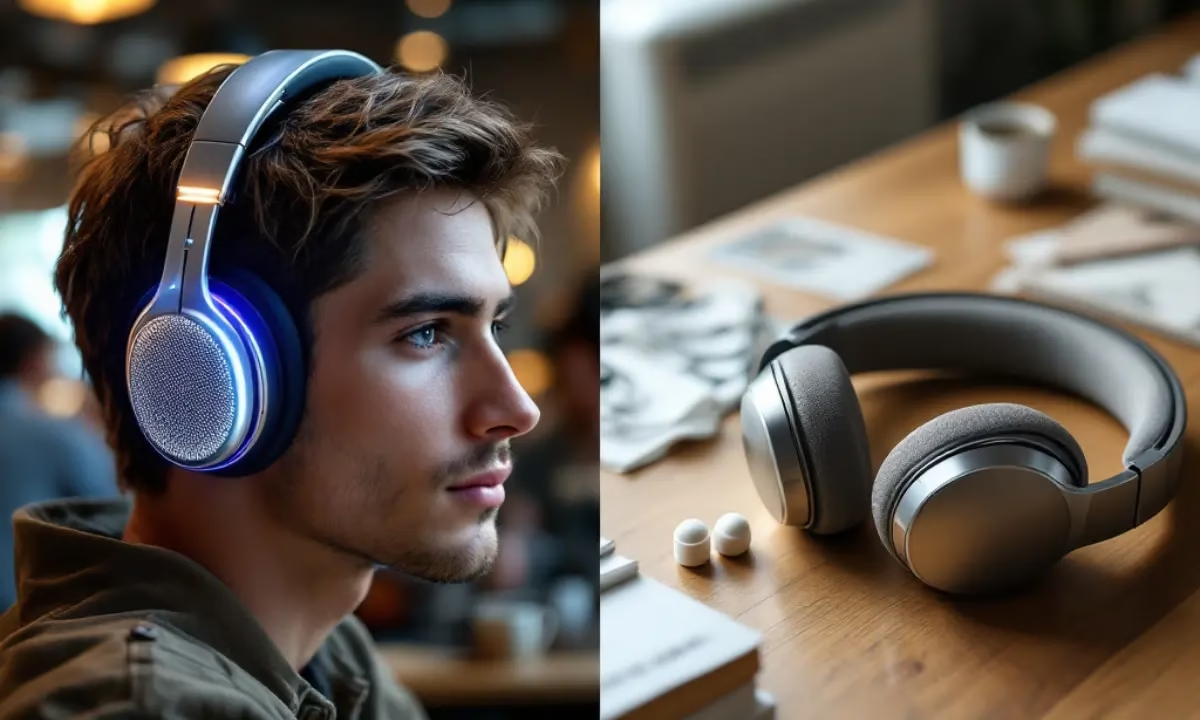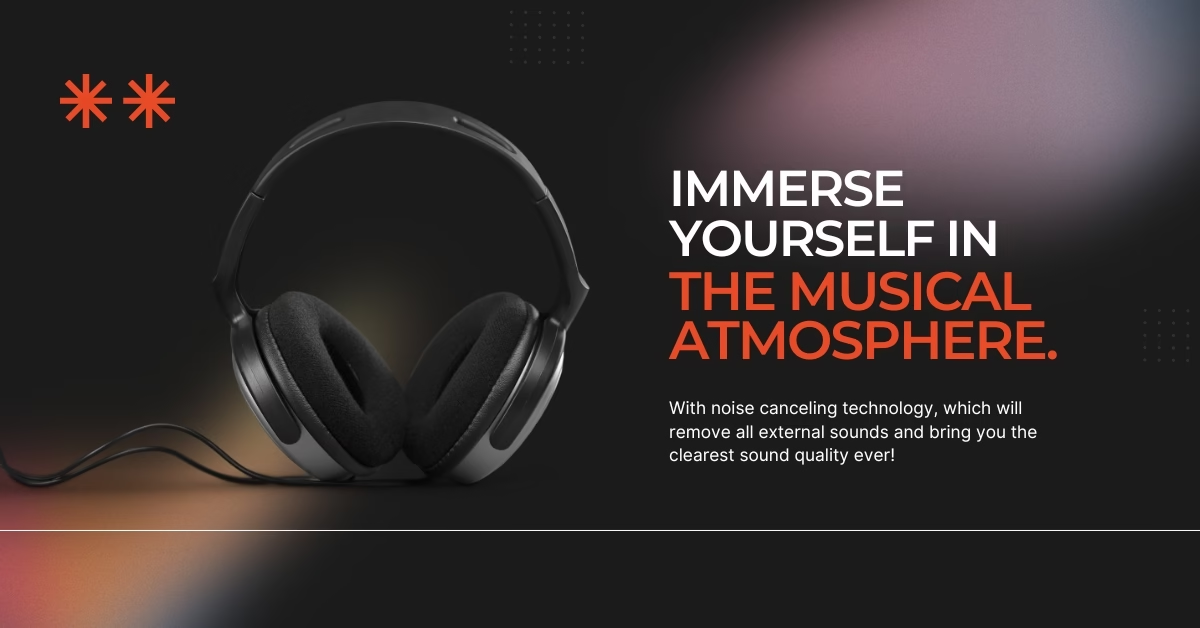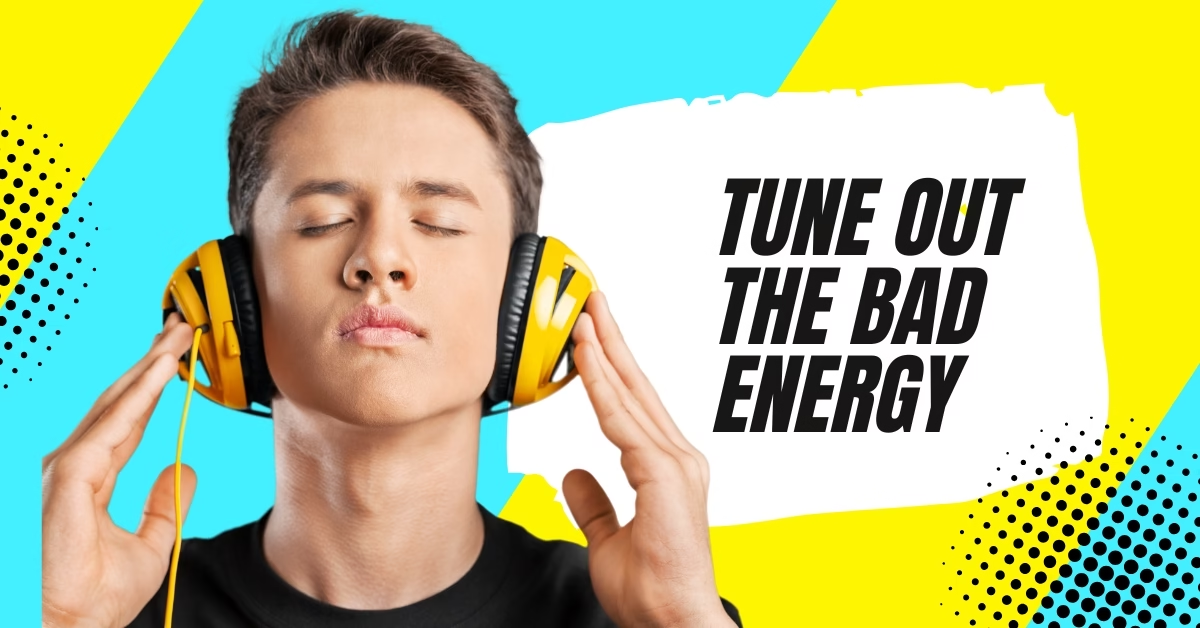Here is your go to guide on Active Noise Cancelling vs Passive “Earpods”. See the key differences, pros, cons and which type is better for you. Today you will find the perfect option for your lifestyle.
Introduction
That noise cancelling technology is a game changer, especially in respect to headphones. How exactly is active noise cancelling different than passive? Which one should you choose? In this article, we will learn about the difference and which is better active or passive noise cancelling, advantages and disadvantages of both the active and passive noise cancelling.
Product Overview (Active Noise Cancelling vs Passive)
Noise cancellation in headphones comes in two main types: active and passive. Both get rid of unwanted background sound, but in different ways.
Active Noise Cancelling (ANC): It uses electronic circuitry to reduce the affects of ambient noise.
Passive Noise Cancelling: Is based on physical barriers like padding and ear cup design preventing sound.
Understanding the difference between active and passive noise cancelling will help you choose the right headphones for your needs.

Key Features and Specifications.
Active Noise Cancelling (ANC)
- Technology: It uses microphones and speakers to generate anti noise signals.
- Power: Has to have a power source (Battery).
- Best For: Like the noise of airplane engines or traffic, constant low frequency noises.
Examples: Sony WH-1000XM5, Bose QuietComfort 45.
Passive Noise Cancelling
- Technology: It is built upon materials and design to physically block the sound.
- Power: It is not powered by a power source.
- Best For: Sound isolation and occasional high frequency noises.
Examples: Over ear headphones, or over ear headphones with dense padding, high quality, in ear monitors.
Active vs passive noise cancellation headphones comparison will help you figure out which fits best for your list of priorities.
Design and Build Quality – Active Noise Cancelling vs Passive
Active Noise Cancelling
All ANC headphones because they require processors and batteries as well as microphones to function properly are usually bulkier, as you wouldn’t want them to be. They often have:
- Comforted by cushined ear cups.
- Sleek, modern designs.
- Extended wear adjustable fit.
Passive Noise Cancelling
Passive noise-cancelling headphones focus on materials and design:
- Silicone tipped or dense foam padding.
- Lightweight construction.
- Some models for portable design with foldable designs.
The passive or active noise cancellation vs active noise cancellation strategy in these two types of products is very different.
Performance and User Experience
Active Noise Cancelling
It’s highly effective in noisy environments — things like airplanes, trains, or city streets.
This may sound slightly hissing from electronic processing.
It offers customizable noise cancelling levels in a majority of its models.
Passive Noise Cancelling:
Offers isolation that is decent and there are no electronic interference.
It’s effectiveness, and this depends upon fit and material quality.
No battery life concerns.
There’s an active vs passive noise canceling choice here based on your needs between just getting rid of noise or focusing on electronic noise reduction.
Pros and Cons
| Feature | Active Noise Cancelling | Passive Noise Cancelling |
|---|---|---|
| Noise Reduction | Excellent for low frequencies | Good for high frequencies |
| Power Requirement | Requires battery | No power needed |
| Portability | Bulky due to electronics | Lightweight and compact |
| Cost | Typically more expensive | Usually more affordable |
The difference between active and passive noise cancelling becomes clear when comparing these pros and cons.
Price and Value for Money
| Type | Price Range | Value Proposition |
| Active Noise Cancelling | $150 – $500 | Advanced technology, superior noise reduction |
| Passive Noise Cancelling | $50 – $200 | Affordable, reliable sound isolation |
Considering passive noise cancellation vs active, price often reflects the level of technology and features provided.
Comparison to Other
| Feature | Active Noise Cancelling | Passive Noise Cancelling | Hybrid Noise Cancelling |
| Power Source | Battery | None | Battery |
| Effectiveness | High for low frequencies | Moderate overall | High for all frequencies |
| Price | High | Moderate | Highest |
Who Should Buy This Product?
Active Noise Cancelling: Perfect for everyone who travels frequently, commuter, and professionals who work in noisy environments.
Passive Noise Cancelling: Though suitable for casual listening, students and those on a budget.
How active noise cancellation compare with passive how and where you do listen to music is yours to think about.
Alternatives to Consider
Hybrid Noise Cancelling Headphones: Use active and passive technologies together for the best of all worlds. This includes Bose 700 and Sony WH1000XM4.
Earplugs or Noise-Isolating Earbuds: It is for a low cost of basic noise isolation.
They help you understand the difference between Active Noise Cancelling vs Passive headphones.

Customer Feedback
Active Noise Cancelling: The major downside of ANC headphones is the battery drain, but customers love how they break up the world to create a serene listening environment.
Passive Noise Cancelling: It’s simple and affordable and users appreciate it, but not so much in the way of effectiveness, depending on fit.
Real world experiences illustrate the difference between active and passive noise cancelling, benefits of each.
FAQs
Q: What’s better, working in a busy office?
A: For constant background noise, the headphones that can help you out are the ones that have active noise cancelling mode.
Q: Do all passive noise cancelling headphones completely block all the noise?
A: No, they’re mostly frequency blocking with some design involved for effectiveness.
Q: Should you really spend extra for ANC headphones?
A: Indeed, if you see yourself in noisy environments quite often.
Final Verdict
So what should you choose, active noise cancelling or passive? Well the answer largely depends on your needs. Noise cancellation that is actively canceling noise is great in noisy environments with good sound isolation, not so good in quieter places, but it’s more expensive and requires power. It’s more time-consuming and expensive, but for occasional use, passive noise cancellation is a simpler, budget friendly option.
The pros and cons of active and passive noise cancelling is that they do things differently, they are used for different reasons, and cost is the deciding factor. Pick the stuff best suited to your way of life.
Where to Buy
Active Noise Cancelling Headphones: Buy from Amazon, Best Buy, or who make the brand site.
Passive Noise Cancelling Headphones: Can be purchased both online at eBay or Amazon, or specialty audio stores.
The understanding of the difference between active noise and passive allows you to choose headphones that are best suited to your lifestyle and preferences.


